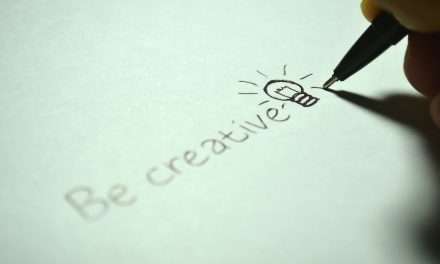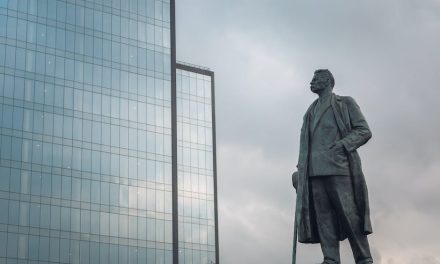Table of Contents
- Introduction
- The Benefits of Open Education Resources (OER) in Breaking Down Barriers
- How Open Education Resources (OER) are Revolutionizing Access to Education
- Breaking Down Barriers: The Role of Open Education Resources (OER) in Promoting Inclusivity
- The Future of Education: Exploring the Impact of Open Education Resources (OER) in Breaking Down Barriers
- Q&A
- Conclusion
Breaking Down Barriers: The Rise of Open Education Resources (OER) – Empowering Education for All.
Introduction
Open Education Resources (OER) have gained significant attention and popularity in recent years as a means to break down barriers in education. These resources, which are freely available for anyone to use, modify, and share, have revolutionized the way knowledge is accessed and disseminated. This rise of OER has opened up new opportunities for learners, educators, and institutions to collaborate, innovate, and create a more inclusive and equitable education system. In this article, we will explore the concept of OER, its benefits, challenges, and its potential to transform education as we know it.
The Benefits of Open Education Resources (OER) in Breaking Down Barriers

Open Education Resources (OER) have gained significant attention in recent years as a powerful tool for breaking down barriers in education. These freely accessible resources, which include textbooks, videos, and interactive learning materials, have the potential to revolutionize the way we teach and learn. In this article, we will explore the benefits of OER in breaking down barriers and how they are transforming education.
One of the most significant barriers that OER can help overcome is the high cost of traditional textbooks. Many students struggle to afford the exorbitant prices of textbooks, which can often cost hundreds of dollars each semester. This financial burden can prevent students from accessing the materials they need to succeed in their studies. However, with OER, students can access high-quality educational resources for free, eliminating the financial barrier and ensuring equal access to education for all.
In addition to cost, OER also addresses the issue of accessibility. Traditional textbooks are often only available in print format, making it difficult for students with visual impairments or other disabilities to access the content. OER, on the other hand, can be easily adapted to meet the needs of diverse learners. With the use of assistive technologies, such as screen readers or text-to-speech software, students with disabilities can access and engage with OER materials, leveling the playing field and promoting inclusivity in education.
Furthermore, OER promotes collaboration and knowledge sharing among educators. Traditional textbooks are static resources that do not allow for updates or customization. In contrast, OER can be continuously updated and improved by a community of educators, ensuring that the content remains relevant and up-to-date. This collaborative approach encourages educators to share their expertise and resources, fostering a culture of innovation and continuous improvement in education.
Another significant benefit of OER is its potential to bridge the gap between formal and informal learning. OER materials can be accessed anytime and anywhere, allowing learners to engage with educational content beyond the confines of the classroom. This flexibility enables students to pursue their interests and passions outside of the traditional curriculum, fostering a love for lifelong learning. Moreover, OER can also be used by non-traditional learners, such as adult learners or individuals seeking to acquire new skills, providing them with the opportunity to access quality educational resources tailored to their needs.
Additionally, OER has the potential to break down geographical barriers in education. In many parts of the world, access to quality education is limited due to factors such as distance or lack of resources. OER can help overcome these barriers by providing educational materials that can be accessed online, regardless of location. This opens up new opportunities for learners in remote or underserved areas, empowering them to pursue their educational goals and contribute to their communities.
In conclusion, the benefits of Open Education Resources (OER) in breaking down barriers are numerous and far-reaching. From reducing the financial burden on students to promoting inclusivity and collaboration among educators, OER has the potential to transform education and make it more accessible to all. By harnessing the power of technology and embracing the principles of openness and sharing, we can create a more equitable and inclusive education system that empowers learners and prepares them for the challenges of the future.
How Open Education Resources (OER) are Revolutionizing Access to Education
Breaking Down Barriers: The Rise of Open Education Resources (OER)
Education is a fundamental right that should be accessible to all, regardless of socioeconomic status or geographical location. Unfortunately, traditional educational resources have often been limited and expensive, making it difficult for many individuals to access quality education. However, with the rise of Open Education Resources (OER), this is beginning to change. OER are freely available educational materials that can be used, shared, and modified by anyone, anywhere in the world. This article will explore how OER is revolutionizing access to education and breaking down barriers.
One of the key advantages of OER is its affordability. Traditional textbooks and educational materials can be prohibitively expensive, especially for students in developing countries or those from low-income backgrounds. OER, on the other hand, are free to access and use. This means that students no longer have to worry about the financial burden of purchasing textbooks or other learning materials. They can simply access the resources they need online, at no cost.
In addition to being cost-effective, OER also offer a wide range of educational opportunities. Traditional educational resources are often limited in scope and may not cover all the topics or subjects that students are interested in. OER, on the other hand, are diverse and cover a wide range of subjects and disciplines. This means that students can explore their interests and pursue their passions, even if their schools or institutions do not offer specific courses or resources in those areas.
Furthermore, OER promotes collaboration and knowledge sharing. Traditional educational resources are often copyrighted and restricted, making it difficult for educators and students to share and collaborate on projects. OER, on the other hand, are open and can be freely shared and modified. This allows educators and students to collaborate on projects, share resources, and learn from each other’s experiences. It fosters a sense of community and encourages the exchange of ideas and knowledge.
OER also have the potential to bridge the gap between formal and informal learning. Traditional education is often confined to classrooms and structured curricula. OER, on the other hand, can be accessed anytime, anywhere, and can be used to supplement formal education or as standalone learning resources. This means that individuals who are unable to attend formal educational institutions, such as working adults or individuals with family responsibilities, can still access quality educational materials and continue their learning journey.
Moreover, OER can be customized and tailored to meet the specific needs of learners. Traditional educational resources are often one-size-fits-all, designed to cater to a broad audience. OER, on the other hand, can be modified and adapted to suit individual learning styles, preferences, and abilities. This allows learners to take ownership of their education and personalize their learning experience.
In conclusion, Open Education Resources (OER) are revolutionizing access to education by breaking down barriers. OER are affordable, diverse, and promote collaboration and knowledge sharing. They bridge the gap between formal and informal learning and can be customized to meet the specific needs of learners. As OER continues to gain momentum, it has the potential to transform education and provide equal opportunities for all individuals, regardless of their background or circumstances.
Breaking Down Barriers: The Role of Open Education Resources (OER) in Promoting Inclusivity
Breaking Down Barriers: The Rise of Open Education Resources (OER)
Education is a fundamental right that should be accessible to all individuals, regardless of their background or circumstances. However, traditional educational resources often come with barriers that prevent many individuals from accessing quality education. These barriers can include high costs, limited availability, and lack of inclusivity. Fortunately, the rise of Open Education Resources (OER) has been instrumental in breaking down these barriers and promoting inclusivity in education.
Open Education Resources are freely available educational materials that can be used, shared, and modified by anyone. These resources include textbooks, lecture notes, videos, and interactive learning modules. The open nature of OER allows educators and learners to access and adapt these resources to suit their specific needs. This flexibility is particularly beneficial for individuals who face barriers to traditional educational resources.
One of the main barriers that OER addresses is the high cost of educational materials. Traditional textbooks and learning resources can be prohibitively expensive, making it difficult for many individuals to afford them. This financial burden often leads to students skipping or dropping out of courses, hindering their educational progress. OER, on the other hand, are freely available, eliminating the cost barrier and ensuring that all individuals have access to quality educational materials.
In addition to cost, OER also addresses the issue of limited availability. Traditional educational resources are often limited to specific institutions or regions, leaving many individuals without access to quality education. This limitation is particularly challenging for individuals in remote areas or developing countries where educational resources are scarce. OER, being freely accessible online, can reach individuals regardless of their geographical location, providing them with equal opportunities for education.
Furthermore, OER promotes inclusivity by catering to diverse learning needs. Traditional educational resources may not always be inclusive of different learning styles, abilities, or cultural backgrounds. OER, on the other hand, can be adapted and customized to meet the specific needs of diverse learners. Educators can modify OER to include alternative formats, such as audio or braille, making education accessible to individuals with disabilities. Additionally, OER can be localized and translated into different languages, ensuring that individuals from various cultural backgrounds can access educational materials in their native language.
The impact of OER in promoting inclusivity is evident in various educational settings. In higher education, many universities and colleges have embraced OER as a means to reduce costs for students and increase access to educational resources. For example, the University of California, Davis, has implemented an OER initiative that has saved students millions of dollars in textbook costs. Similarly, in K-12 education, OER has been used to bridge the resource gap between schools in affluent areas and those in underserved communities. By providing free and accessible educational materials, OER has empowered educators and students to overcome barriers and achieve educational success.
In conclusion, Open Education Resources have emerged as a powerful tool in breaking down barriers and promoting inclusivity in education. By eliminating the cost barrier, increasing availability, and catering to diverse learning needs, OER has revolutionized the way education is accessed and delivered. The rise of OER signifies a shift towards a more inclusive and equitable education system, where all individuals have equal opportunities to learn and succeed. As OER continues to gain momentum, it is crucial for educators, policymakers, and institutions to embrace and support this movement, ensuring that education remains a right, not a privilege.
The Future of Education: Exploring the Impact of Open Education Resources (OER) in Breaking Down Barriers
The future of education is rapidly evolving, with new technologies and innovative approaches transforming the way we learn. One such approach that is gaining momentum is the use of Open Education Resources (OER). OER refers to freely accessible educational materials that can be used, shared, and modified by anyone. These resources include textbooks, videos, lectures, and interactive learning modules, among others. The rise of OER is breaking down barriers in education and revolutionizing the way knowledge is disseminated.
One of the key barriers that OER is addressing is the high cost of textbooks. Traditional textbooks can be prohibitively expensive, making it difficult for many students to afford the required materials for their courses. This financial burden can have a significant impact on students’ ability to succeed academically. OER provides a solution to this problem by offering free or low-cost alternatives to traditional textbooks. Students can access these resources online, eliminating the need to purchase expensive textbooks. This not only saves students money but also ensures that all students have equal access to educational materials.
In addition to reducing costs, OER also promotes inclusivity and accessibility in education. Traditional textbooks are often written from a specific cultural or societal perspective, which can exclude or marginalize certain groups of students. OER, on the other hand, allows for the creation of diverse and inclusive educational materials. Educators and experts from different backgrounds can contribute to the development of OER, ensuring that a wide range of perspectives are represented. This promotes a more inclusive learning environment and helps students from diverse backgrounds feel valued and represented.
Furthermore, OER has the potential to bridge the gap between formal and informal learning. Formal education is often confined to the classroom, with limited opportunities for students to engage with real-world applications of their learning. OER provides a platform for educators to create interactive and engaging learning materials that connect classroom concepts to real-world scenarios. This not only enhances students’ understanding of the subject matter but also helps them develop critical thinking and problem-solving skills. By blurring the boundaries between formal and informal learning, OER prepares students for the challenges of the modern workforce.
Another barrier that OER is breaking down is the geographical divide in education. In many parts of the world, access to quality education is limited due to factors such as distance, lack of infrastructure, and economic constraints. OER has the potential to overcome these barriers by providing free and accessible educational materials online. Students in remote areas can access the same resources as their counterparts in urban areas, leveling the playing field and ensuring that no student is left behind. This has the potential to revolutionize education in developing countries and empower individuals to pursue their educational goals.
In conclusion, the rise of Open Education Resources is transforming the future of education. By reducing costs, promoting inclusivity, bridging the gap between formal and informal learning, and overcoming geographical barriers, OER is breaking down the traditional barriers in education. As more educators and institutions embrace OER, the potential for innovation and collaboration in education is limitless. The future of education is open, accessible, and inclusive, thanks to the power of Open Education Resources.
Q&A
1. What are Open Education Resources (OER)?
Open Education Resources (OER) are freely accessible educational materials that can be used, shared, and modified by educators and learners worldwide.
2. How are OER different from traditional educational resources?
Unlike traditional educational resources, OER are openly licensed, allowing users to freely access, use, adapt, and distribute the materials without any cost or legal restrictions.
3. What are the benefits of using OER?
Using OER can help reduce educational costs, increase access to quality educational materials, promote collaboration and innovation among educators, and provide personalized learning experiences for students.
4. How are OER breaking down barriers in education?
OER are breaking down barriers in education by providing equal access to educational resources for learners worldwide, regardless of their geographical location or financial constraints. They also promote inclusivity, encourage collaboration, and foster the sharing of knowledge and expertise among educators.
Conclusion
In conclusion, the rise of Open Education Resources (OER) has been instrumental in breaking down barriers to education. OER provides free and accessible learning materials, allowing individuals from all backgrounds to access quality education. It has the potential to revolutionize traditional education systems by promoting collaboration, innovation, and inclusivity. As OER continues to gain momentum, it is crucial for educators, policymakers, and institutions to embrace and support this movement to ensure equitable access to education for all.




